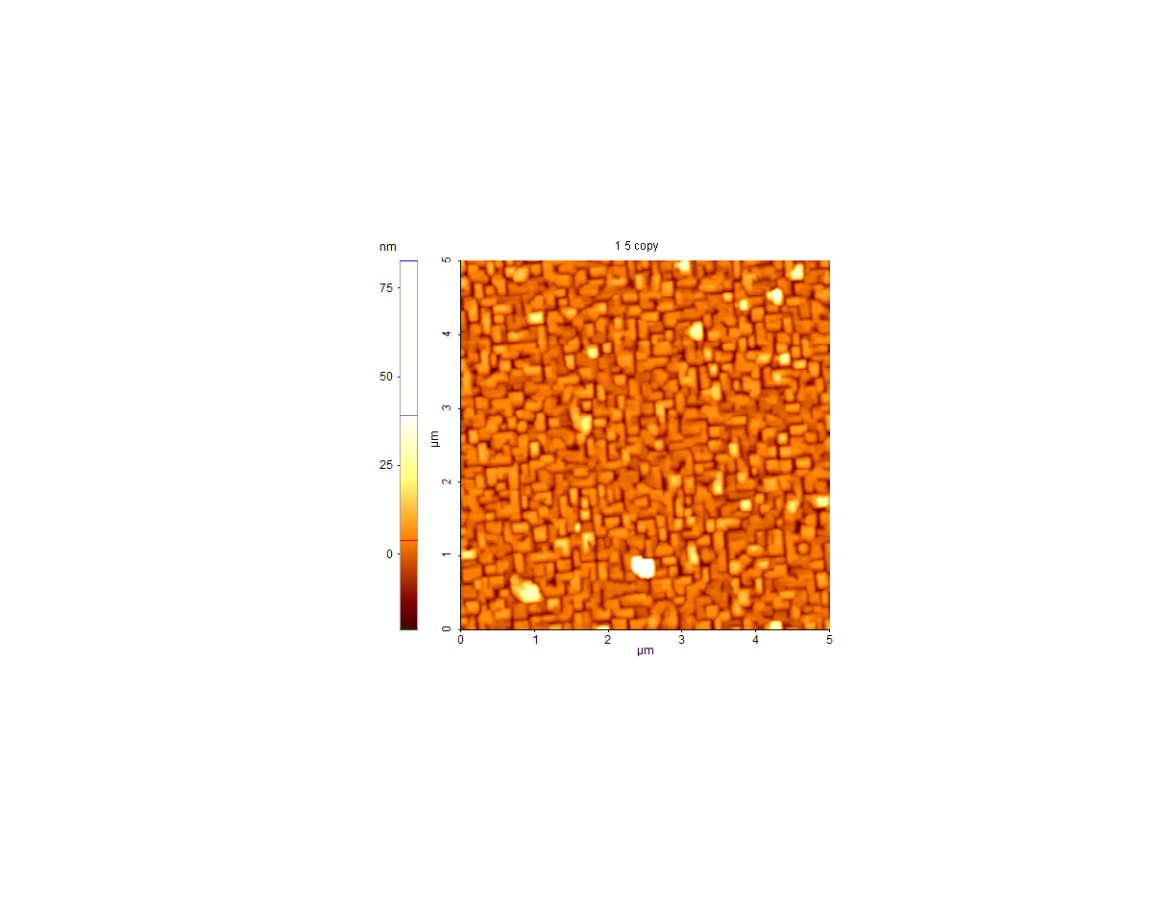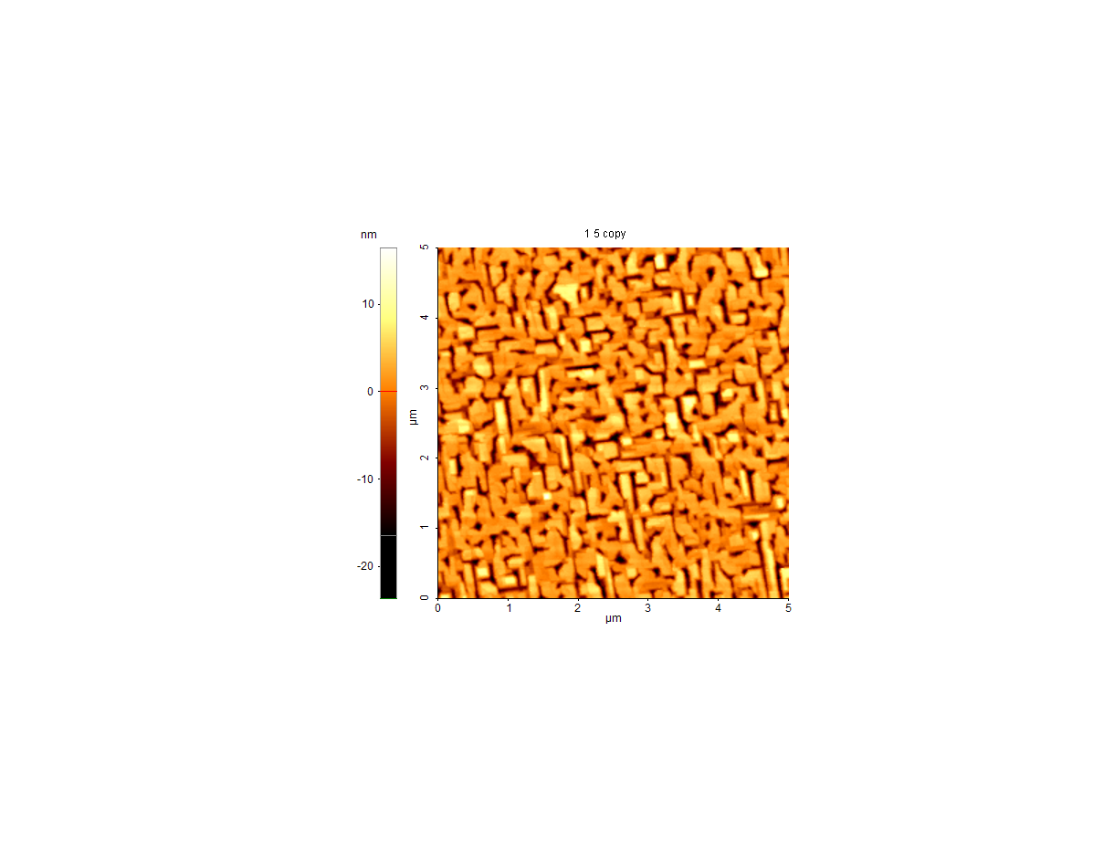Project UPSTART
Ultrafast transient electric effects in strained perovskites thin films for energy harvesting applications
The scientific motivation behind this proposal is to reveal the transient electric effects tacking place upon light irradiation of complex perovskite nanostructures strain engineered, and to unlock the applicative potential of these effects such as flexoelectric or piezophototronic, in the field of energy harvesting through water splitting.
Employing the ultrafast laser spectroscopy in combination with the high resolution structural data, the appearance of these effects and the way to adjust their influence to obtain combined photo-electromechanical energy harvesting, will be studied. The interaction of light with perovskite complex materials has generated rich phenomena important for new material functionalities and for understanding the mechanisms governing these functionalities. Optical excitation of ferroelectric complex oxides, in particular, has generated a plethora of intriguing and potentially useful yet largely unexplained physical phenomena including photostriction and photovoltaic effects. The importance of revealing the ultrafast processes occurring in thin ferroelectric films when subjected to light irradiation and different levels of strain, is expressed by the latest reports on unexplained enhancement of photogeneration efficiencies in BiFeO3- based thin films. Possible transient electrical effects due to ultrafast laser irradiation can be noticed and used for increasing the overall performance of the water splitting efficiencies of the thin films.

Project objectives
The project includes aspects related to both fundamental and applicative research, bringing new results on material analysis and thin films laser processing. The main objective of this proposal is to reveal the transient electric effects tacking place upon light irradiation of complex perovskite nanostructures strain engineered, and to unlock the applicative potential of these effects such as flexoelectric or piezophototronic, in the field of energy harvesting through water splitting. Using the ultrafast laser spectroscopy with high temporal dynamic that yields in combination with the high resolution structural data, the appearance of these effects and the way to adjust their influence to obtain combined photo-electromechanical energy harvesting.
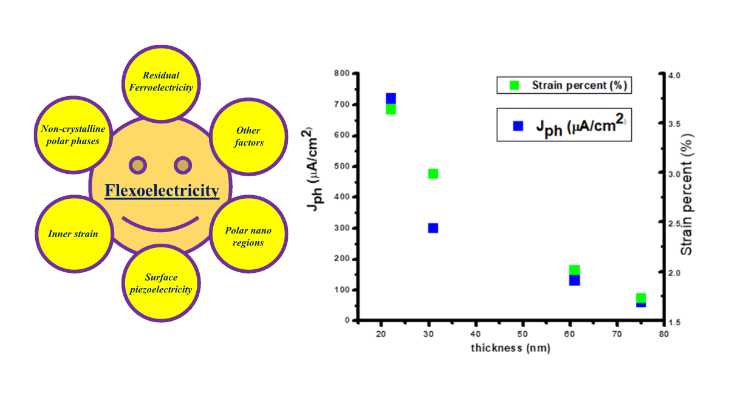
Estimated results
The results obtained in the project will consist in the study of the the applicative potential of transient electrical effects upon ultrafast iradiations such as flexoelectric or piezophototronic, in the field of energy harvesting through water splitting. New types of functional devices based on the results obtained in this proposal can be proposed. The obtained results will be disseminated by communication at international conferences and publications in ISI journals: at least 3 ISI papers in high-ranked journals (Scientific Reports, ACS APPLIED MATERIALS & INTERFACES, Applied Physics Letters, etc) and communications at international conferences.
Scientific report on the implementation of the project between June 2022 and December 2022
Stage I/2022
Project title: Ultrafast transient electrical effects in structurally deformed perovskite thin films for applications in green energy production.
Stage name: Obtaining thin layers of perovskite material on different monocrystalline substrates During this stage, thin layers of perovskite materials were obtained by pulsed laser deposition. The materials used to get these films were: bismuth ferrite (BiFeO3-BFO), bismuth ferrite doped with lanthanum (BiFeO3 doped with La-BLFO), lanthanum ferrite (LaFeO3-LFO) and strontium titanate (SrTiO3-STO). They were grown on different single-crystal substrates, conductors, and semiconductors. Furthermore, their physicochemical properties were studied and discussed concerning the experimental parameters used to obtain them. Also, actions were undertaken to document the latest novelties appearing in the specialized literature to improve the quality of the oxide layers obtained. Additionally, within this stage, the design and construction activities of the experimental setup for temporally and spatially resolved optical spectroscopy started.
Activity 1.1 Depositing thin films of BFO, LFO, and STO by PLD on different substrates
The thin layers of BFO, BLFO, LFO, and STO were obtained by the pulsed laser deposition-PLD technique with the help of a solid-state Nd-YAG laser with 266 nm emission. This wavelength was chosen due to the high absorption capacity in the studied materials' ultra-violet (UV) range. In addition to the previously mentioned laser, the experimental device used for the preparation of the films also includes a deposition enclosure in which the multi-target system, a substrate heating system (electrical) are mounted, a gas control system, and the vacuum system composed of the preliminary pump and the turbomolecular pump. In addition, the target control system, the electric furnace control system, and the incident beam translation system are mounted outside the enclosure.
|
2263 BFO/STO 625 o C RMS= 6.3 nm |
2278 BFO/STO 700 o C RMS= 4.47 nm |
|
Influence of temperature on surface morphology for BFO/STO films |
|
Activity: 1.2 Physico-chemical characterizations carried out on epitaxial thin layers of BFO, LFO, STO
Surface morphology was determined by atomic force microscopy (AFM) in non-contact mode, using an AFM XE100 system (Park Systems). The substrate temperature used during deposition plays a significant role in obtaining the physicochemical properties of the deposited film.
Therefore, as can be seen in Figure 1, a temperature difference.
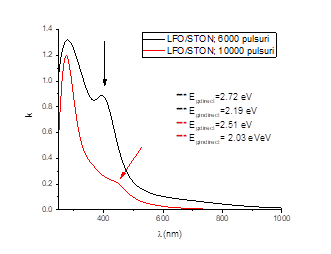
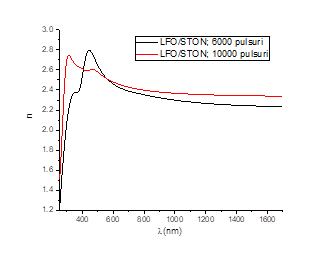
-
Dispersions of refractive indices and extinction coefficients for thin LFO films
Experimental setup design for time- and angle-resolved optical spectroscopy
The transient optical behavior of materials is determined by optical absorption, transmission, or reflectivity spectroscopy. These measurement techniques can bring, under certain conditions, information about the dynamics of charge carriers in semiconductor materials on a time scale comparable to the pulse duration of the laser used as a characterization tool. Together with other complementary measurement techniques (ray diffraction X, XPS, etc..) complements the information about the structure and morphology of films deposited by different techniques, thus being a potent tool in semiconductor physics.
At this stage, we designed an experimental setup for measuring the temporally and angularly resolved absorption spectrum. The parameters and performances of the time-resolved spectra measuring optical device depend on the currently available technologies in terms of the response time of the detectors. For dynamics faster than times of the order of tens of picoseconds, there is no detector with direct measurement. However, the temporal behavior can be indirectly determined down to resolutions of tens-hundreds of femtoseconds in pump-probe experiments with ultrashort laser pulses with pulse durations of the order of tens of femtoseconds.
- Description of the pump-probe experimental set-up
From the point of view of the interaction of the semiconductor material with the main laser pulse, photonic excitations of the order of femtoseconds locally induce charge carriers, electrons in the conduction band, which in turn modify for a short time, femtoseconds to tens of picoseconds, the optical properties of the studied material. More precisely, the femtosecond laser pulse's intense electric field locally modifies the material's electrical susceptibility, respectively, the electrical permittivity e, where e = e (1+c). First, the interaction between the intense electric field of the light and the material induces a local and transient change in the material parameters: the refractive index n (t,l) and the absorption coefficient of the material (t,l), where l is the length of the wave of the optical probe (sample) signal and t s the delay between the main, pumping laser pulse and the sample beam – Figure 1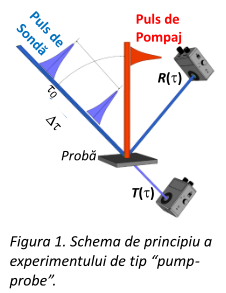
Activity 1.3 – Dissemination
Due to the results obtained so far in the project, compared to existing reports in the literature, the following dissemination activities were carried out:
- oral presentation "OMN200-119 Title: Tailoring the functional perovskite thin films through strain engineering, Dr. Nicu Scarisoreanu, F. Andrei, National Institute for Laser, Plasma and Radiation Physics, Fotoplasmat INFLR" conference Advanced Topics in Optoelectronics, Microelectronics and Nanotechnologies ATOM-N-2022, Constanta, Romania.
Stage II/2023
Project Title: Ultrafast Transient Electrical Effects in Structurally Deformed Perovskite Thin Films for Green Energy Production Applications.
Stage Name: Determining the Influence of Structural Deformation and Ultrafast Laser Illumination on the Functional Properties of Epitaxial Perovskite Thin Layers.
Activity 2.1 Optimization of the Thin Film Deposition Process of BFO, LFO, STO Using PLD on Different Substrates
Within this stage, an optimization process for the deposition of thin films of bismuth ferrite (BiFeO3-BFO), lanthanum-doped bismuth ferrite (La-doped BiFeO3-BLFO), lanthanum ferrite (LaFeO3-LFO), and strontium titanate (SrTiO3-STO) was initiated. The physico-chemical properties of the thin layers obtained through Pulsed Laser Deposition (PLD) were analyzed, considering the variation of various deposition parameters such as the type of monocrystalline substrate, the degree of epitaxially induced structural deformation by the support, and the variation of the thin layer thickness, etc. Additionally, thin film deposition experiments of La-doped BiFeO3 were performed, a simulation code for the distribution of ferroelectric domains in perovskite materials was developed, based on a Phase Field Modeling approach, and temporal-resolved optical spectroscopy experiments were also conducted.
Activity 2.2 Physico-Chemical Characterizations Performed on Epitaxial Thin Layers of BFO, LFO, STO
Thin films with different degrees of crystal deformation were also obtained for BFO, LFO, and BLFO thin layers. The diffractograms of the BFO, BLFO, LFO, and STO films deposited on monocrystalline supports reveal that for both wavelengths of the used laser (Nd-YAG-266 nm, ArF-193 nm), epitaxial perovskite films are obtained. In the case of the photoelectrochemical evaluation of BFO and LFO films deposited with lasers operating at 193 nm and 266 nm, it can be observed that the photocurrent values obtained for the thin layers deposited at 193 nm are much higher.
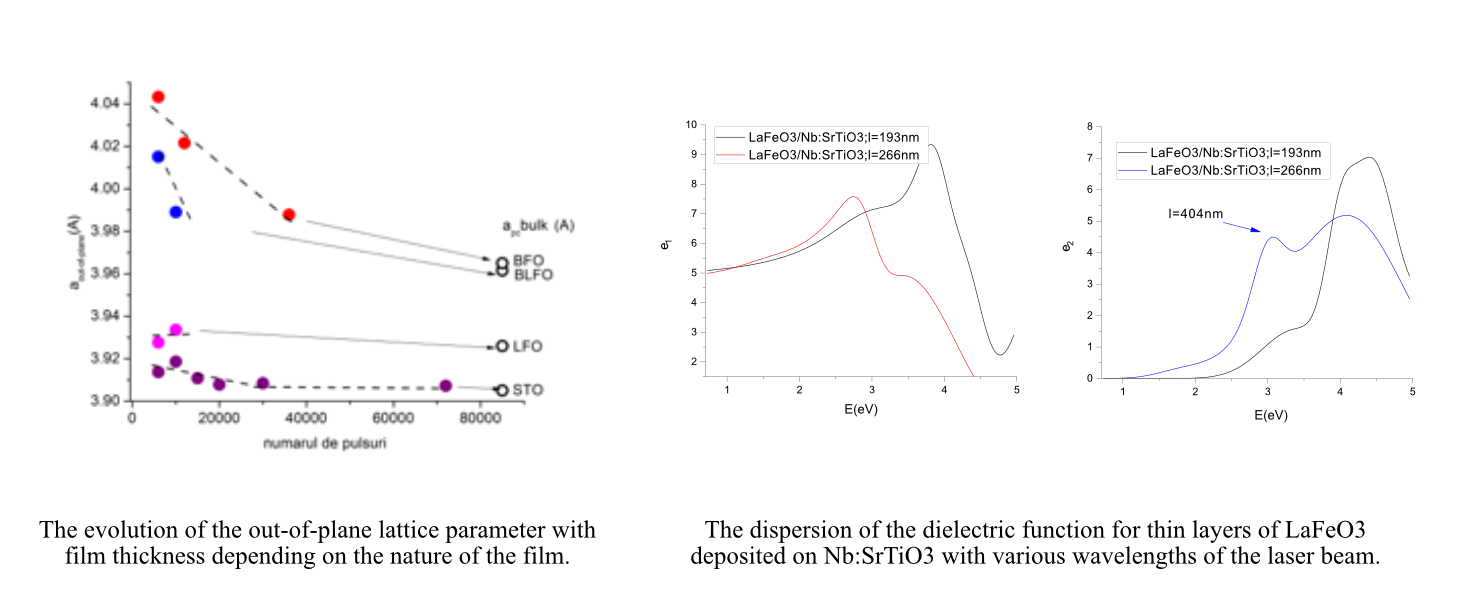
Additionally, a simulation code for simulating the distribution of ferroelectric domains in perovskite materials has been developed, based on a Phase Field Modeling approach. This effective model starts from known material constants and allows the investigation of systems at the necessary scale to observe the effects of interest by calculating the minimum energy state of the investigated system under the influence of external factors. There are a few aspects that are still being implemented or generalized before the code can be used to identify configurations of interest, but it can already reproduce experimentally observed structures, such as 71° and 109° domain walls.
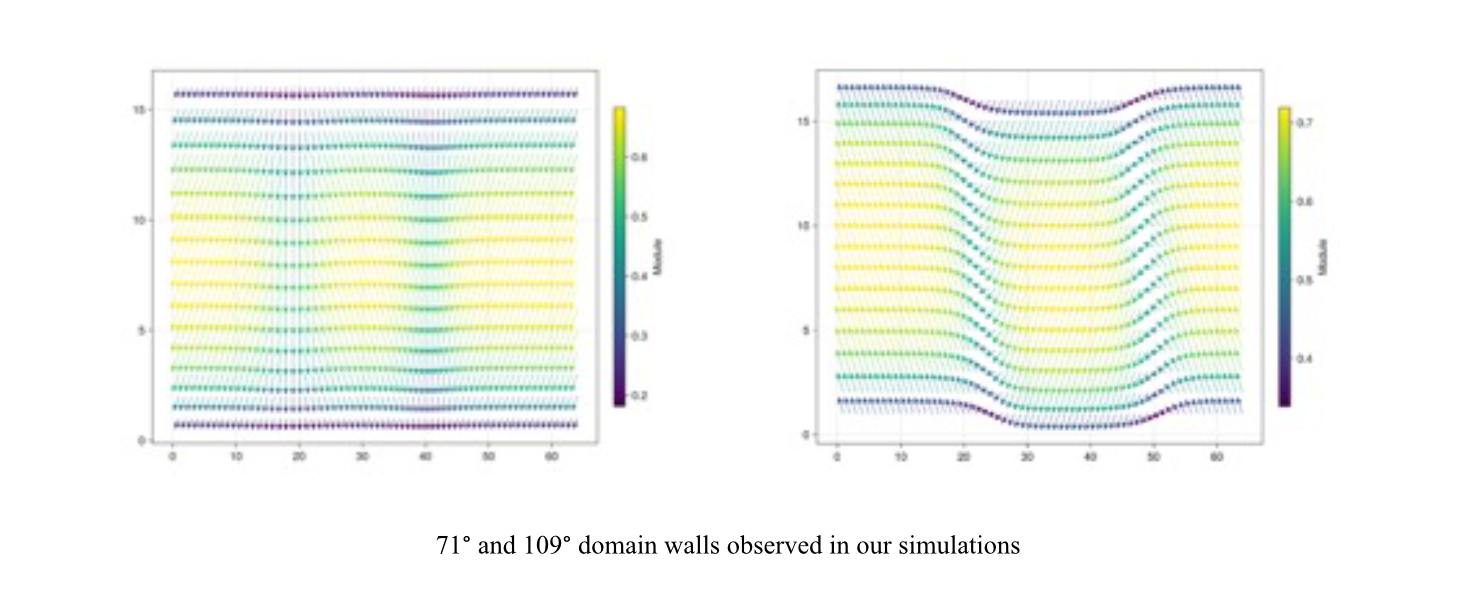
Activity 2.3 Ultrafast Laser Spectroscopy Experiments on Perovskite Films of BFO, LFO, and STO
The experimental setup for characterizing perovskite samples in a pump-probe configuration has been completed, along with software for command and control with a graphical interface to integrate the equipment used in the experiment. Initial tests have been conducted to measure the reflectance spectra at different optical delay times between the pump and probe arms. Some optimizations of the experimental setup are necessary for precise quantification of absorption, which will be carried out in the next stage.
Activity 2.4 Evaluation of the Photoelectrochemical Activity of Perovskite Thin Layers with Different Levels of Deformation
All deposited BFO films exhibit photocatalytic activity, with an improvement in the effect observed in structures with a higher level of epitaxial stress and reduced thickness. For LFO films, alkaline and acidic electrolytes were tested. In an alkaline environment, both photocathodic and photoanodic currents are observed, and chemical stability is excellent. On the other hand, in an acidic environment, only photooxidative activity is observed, and the obtained performances are weaker. The photoelectrochemical evaluation of BFO and LFO films deposited with lasers operating at 193 nm and 266 nm showed that the photocurrent values obtained for the thin layers deposited at 193 nm are much higher.
Activity 2.5 Dissemination
Due to the results achieved so far in the project, in comparison with existing literature reports, the following dissemination activities have been carried out:
Oral presentation "Tuning the functional properties of perovskite thin films through complex ensembles of nanoscale phase/nanodomain fluctuations" by Florin ANDREI, Floriana Craciun, Maria Dinescu, Ruxandra Birjega, Valentin Teodorescu, Valentin Ion, Nicu Doinel Scarisoreanu - E-MRS 2023 Spring Meeting, Strasbourg, France.
Oral presentation "Perovskites-based thin films for photoelectrochemical water-splitting performances" by Florin ANDREI, Valentin ION, Nicu Doinel SCARISOREANU - E-MRS 2023 Spring Meeting, Strasbourg, France.
Poster presentation: "Thickness-Dependent Photoelectrochemical OER Water Splitting Performances of LaFeO3 Thin Films" by Florin ANDREI, Ruxandra BIRJEGA, Valentin TEODORESCU, Valentin ION, Nicu Doinel SCARISOREANU - E-MRS Fall Meeting 2023, Warsaw, Poland.
Poster presentation: "Domain Analysis of Perovskite Systems Through Phase Field Modeling" by Ioan-Mihail Ghitiu, G. A. Nemnes, V. Ion, N. D. Scarisoreanu - E-MRS Fall Meeting 2023.
Poster presentation: "2D AND 3D simulation of laser ablation of metallic targets" by Alexandru-Mihai IAMANDI, Dr. Nicu SCĂRISOREANU, Professor Daniel GHICULESCU - 21st International Balkan Workshop on Applied Physics and Materials Science, Constanta, Romania.
An ISI article has been accepted for publication:
"Impact of Structural Strain in Perovskite Epitaxial Thin Films on Their Functional Properties," Crystals – in press, F. Andrei, M. Dinescu, V. Ion, F. Craciun, R. Birjega, and N. Scarisoreanu.
An article is in the finalization and submission stage to the Applied Surface Science journal:
"Strain engineering of epitaxial perovskite-type heterostructures based on BiFeO3 and LaFeO3 for efficient and stable photoelectrochemical water splitting," F. Andrei, V. Teodorescu, R. Birjega, V. Ion, C. Marcu, N.D. Scarisoreanu.
